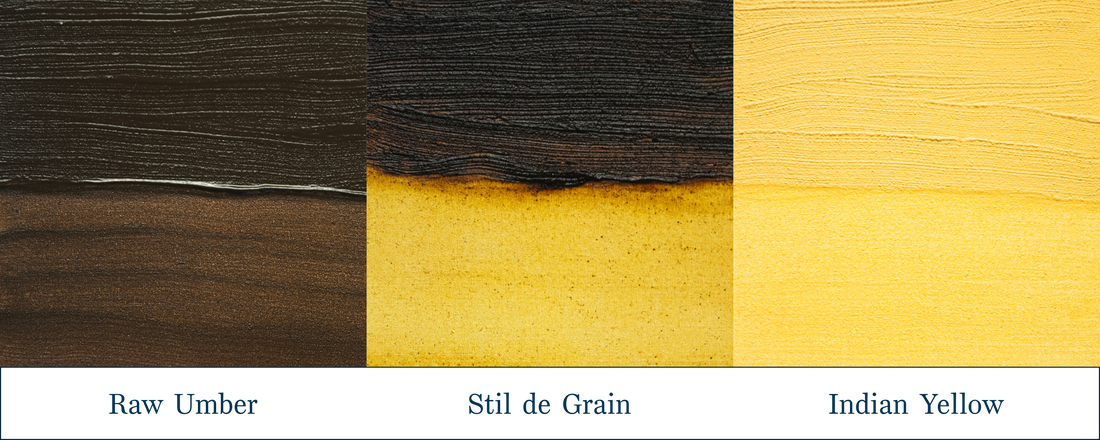
Masstone vs Undertone: What Every Artist Should Know
Share
Together, masstone and undertone offer critical insight into a pigment’s behavior. Two paints may appear nearly identical in masstone but diverge dramatically in undertone or vice versa. This greatly affects blending, layering, and glazing. By gaining a further understanding, we can more effectively mix color and control hue. Specifically,
Masstone refers to the color of a paint as it appears directly from the tube or pan, that is, applied thickly and without dilution. It is the pigment at full concentration, is often opaque, and reveals the pigment’s mass hue, darkness, and saturation. Masstone is the first impression of a color: what you see when the paint is undiluted and laid down thickly in a solid swatch.
Undertone, by contrast, reveals itself when the paint is thinned with medium (like water in watercolor, or oil in oil paint) or spread into a sheer film. It’s the subtle hue that lies beneath the mass color and often shows the true character of a pigment, especially for semi-transparent or transparent paints or for how a pigment will behave in mixes, tints, shades, or tones. The undertone may shift cool or warm, lean toward another hue, or display unique optical qualities such as a blue undertone in what otherwise appears as a warm red.
While definitions are helpful, it is best shown through examples.

Perhaps the most dramatic is Stil de Grain. It has an intensely deep brown masstone similar to the masstone of an Umber while its undertone is a warm yellow similiar to Indian Yellow or Arzica.
If we relied solely on the masstone we might think that Stil de Grain would mix with something like Ultramarine Blue to create a deep brown-black while it actually creates hues of intense green.

Though lakes can vary significantly in tone depending on how they are made, Madder Lakes and Cochineal lakes tend to have similar masstones but diverge significantly in undertone. Madder tends to have an undertone that leans warm and orange while Cochineal tends toward cool and magenta tones.
Madder, Cochineal, and Stil de Grain all differ substantially between masstone and undertone as do many lakes and transparent pigments. In their masstone they are much more opaque and deep than their undertones.
On the other hand, many modern, synthetic pigments differ less between masstone and undertone.

Cobalt cerulean is somewhat darker and more opaque in its masstone but its hue does not shift very much at all. Cadmium orange has little difference between its masstone and undertone.
To test a paints undertone you want to mix in a generous amount of medium to the paint and paint it thinly accross your surface. You can also create a tint with strong whites such as Titanium White.
Masstone and undertone are essential tools in mastering color. By observing them carefully and building knowledge through testing swatches, tints, or mixes, you can gain greater confidence and control in your palette. Every pigment has its own unique interactions, strengths, and flaws.
